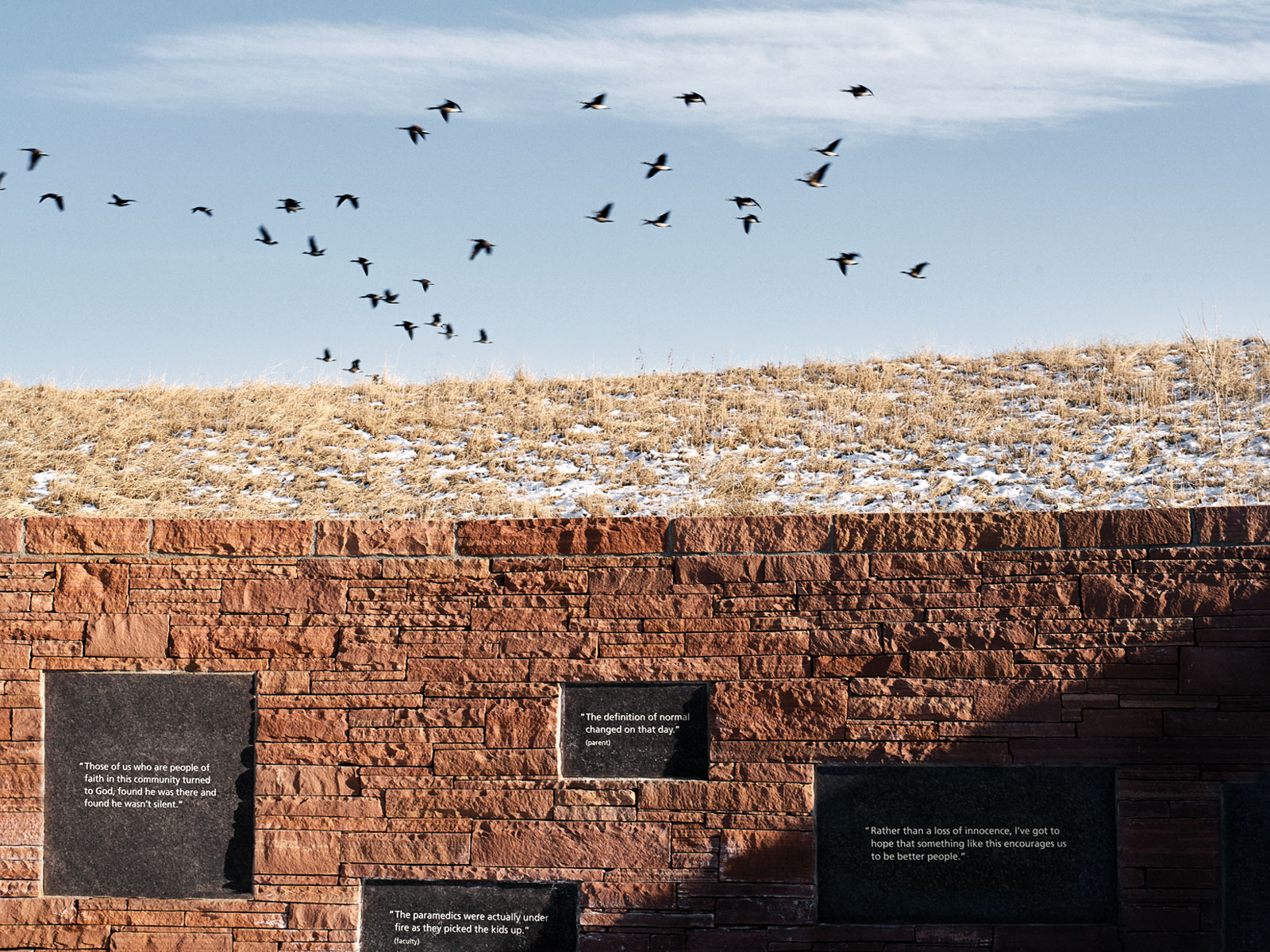There was a time when the words “active shooter” weren’t part of our lexicon. That was before Columbine.
Twenty years later, what have we learned?
|It was cold and starting to snow when I visited the Columbine Memorial on a Sunday afternoon this past winter. Perched atop a hill just northwest of Columbine High School, in Robert F. Clement Park, the monument feels exceedingly small given the magnitude of the events of April 20, 1999, and the place they hold in our collective consciousness. My colleague Lindsey Koehler and I were the only ones there that day. We split up, separately reading the short remembrances of the 13 people who’d been murdered nearly two decades earlier, before taking in the plaques that are embedded in the outside border of the memorial. It was very quiet. We didn’t talk, really. There wasn’t much to say.
When our editorial team started thinking about creating this special issue, though, we knew there would be plenty to discuss. Our conversations began more than a year ago—just after the shooting at Marjory Stoneman Douglas High School in Parkland, Florida. The intense energy and impassioned appeals emanating from the Parkland students were undeniably powerful and rekindled a conversation that started—but didn’t get nearly far enough—with Columbine. Although we were glad to see a renewed dialogue about school violence, we realized many Americans were having almost the exact same discussions they’d had after Columbine, 19 years earlier. It was as if nothing had changed. Was it possible, we wondered, that Columbine, that seminal moment in American history, had taught us nothing?
We decided to find out. We began talking with experts and reading books and scouring journals that addressed the issues surrounding school shootings in our country. For the better part of a year, we immersed ourselves in this very disturbing, very complicated, and very divisive issue. What we discovered was both horrifying and encouraging.
There is no simple answer to the problem of school and mass shootings, even though Americans would like it to be thus. Change will only happen if we take a multipronged approach, and our research and reporting revealed four critical issues, all of which are connected to this uniquely American problem: the media, gun laws, school security, and mental health.
On that winter day we visited the memorial, I was struck by the humility and humanity of the words on the plaques, just as I was awed by the mountains of the Front Range in the distance. One inscription on the outer wall reads: “It brought the nation to its knees, but now that we’ve gotten back up how have things changed; what have we learned?” Twenty years later, we don’t have all the answers, and we’re under no illusion that we could fully explore the intricacies of these broad topics. But we do believe we have answered the question we initially posed. America—and Colorado, in particular—has learned from Columbine, and we’ve made significant progress in dealing with school shootings. As these stories illustrate, and as recent history has taught us, our successes have only brought us so far. We may never have all of the answers we seek—that may be out of our control. What is in our control is fostering the will, political and otherwise, to do everything we can to prevent tragedies like Columbine from continuing to plague our communities, our schools, and our children.
This story is part of 5280 Magazine’s special issue dedicated to the 20th anniversary of Columbine. Explore the this feature using the links below or at the top of the page.

